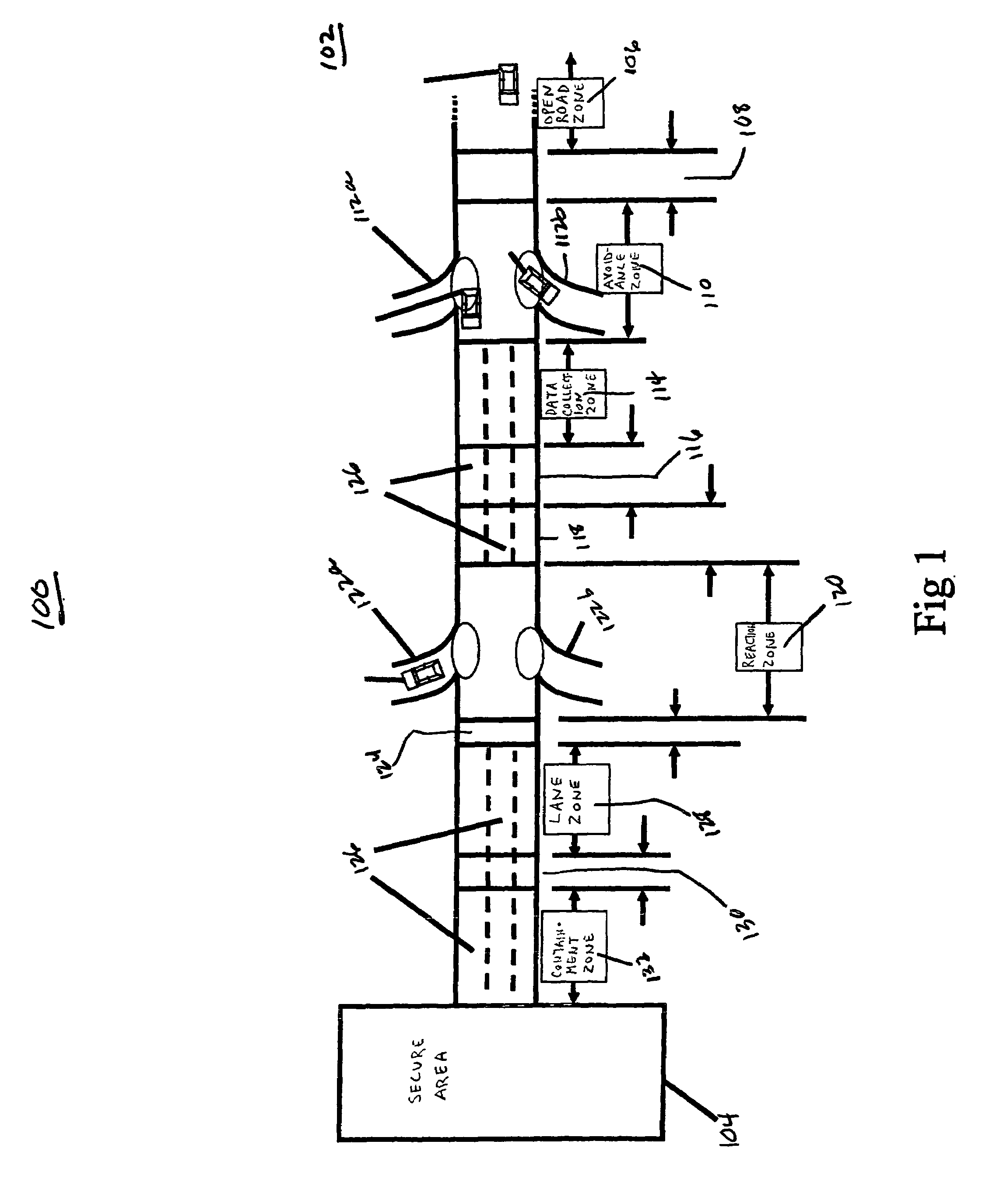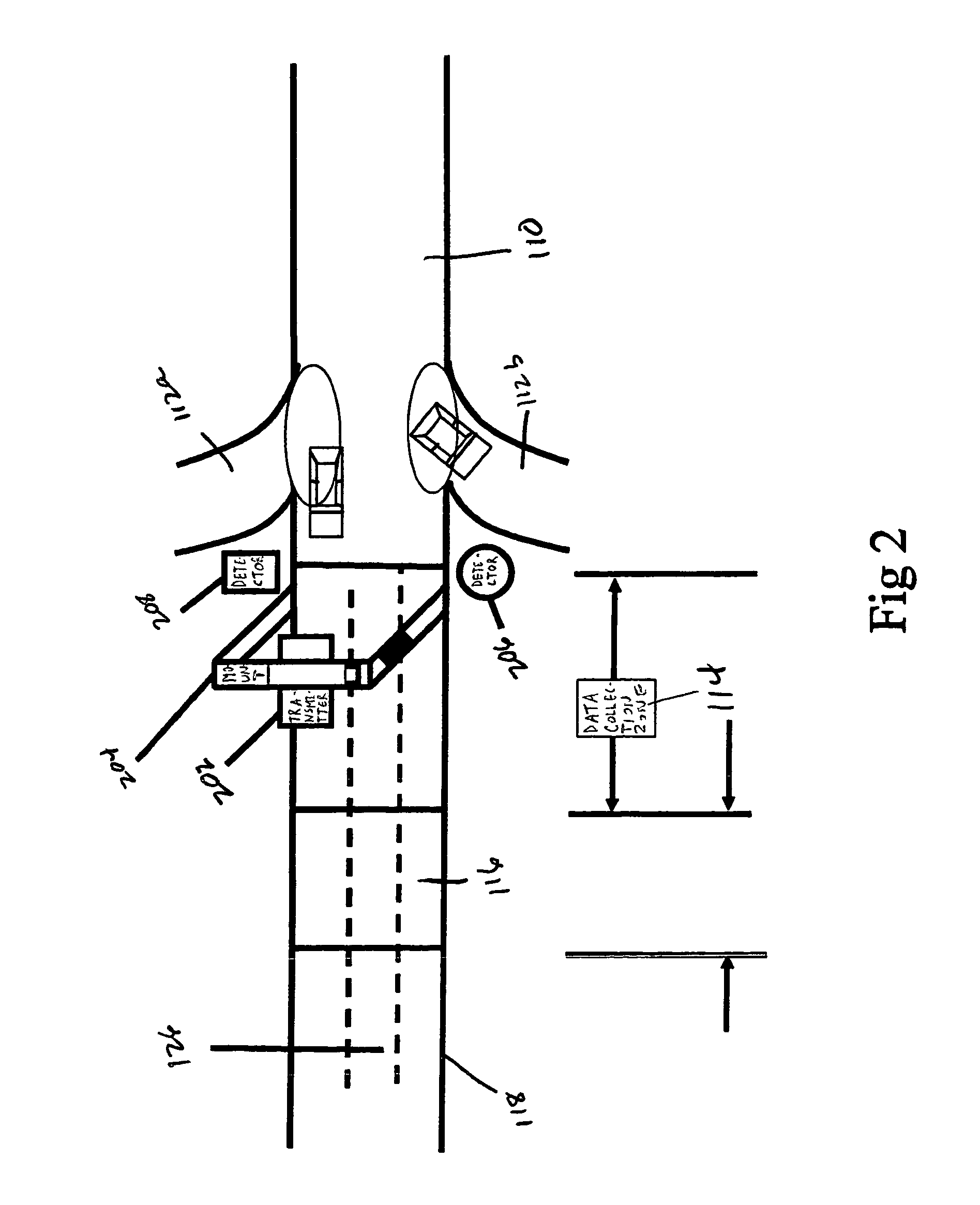Vehicle passenger authorization system
a technology for passenger authorization and vehicle, applied in the field of security systems, can solve the problems of high delay, inability to improve traffic flow through security checkpoints, and inability to use biometric technology stationaryly, and achieve the effect of low data rate and low cos
- Summary
- Abstract
- Description
- Claims
- Application Information
AI Technical Summary
Benefits of technology
Problems solved by technology
Method used
Image
Examples
Embodiment Construction
[0019]FIG. 1 shows one of many alternative embodiments of a vehicle passenger authorization system (VPAS) 100 of the present invention. The VPAS 100 includes a multi-zone staging area 102 (staging area) for regulating traffic flow. In a preferred embodiment, a vehicle must pass through each zone of staging area 102 in order to gain access to secure area 104. The staging area 102 optionally but preferably includes the following zones:
[0020]Open Road Zone 106 is a public road preferably having multiple traffic lanes.
[0021]Alert Zone 108 is sign posted to advise vehicle drivers that the vehicle is about to enter a restricted area. Vehicles can be counted electromechanically in this zone as a means of determining how many vehicles inadvertently enter the zone.
[0022]Avoidance Zone 110 allows drivers to exit the VPAS 100 via exits 112a or 112b. The avoidance zone 110 is sign posted with exit signs for directing vehicles back to public roads or to a non-secured area such as a visitor cente...
PUM
 Login to View More
Login to View More Abstract
Description
Claims
Application Information
 Login to View More
Login to View More - R&D
- Intellectual Property
- Life Sciences
- Materials
- Tech Scout
- Unparalleled Data Quality
- Higher Quality Content
- 60% Fewer Hallucinations
Browse by: Latest US Patents, China's latest patents, Technical Efficacy Thesaurus, Application Domain, Technology Topic, Popular Technical Reports.
© 2025 PatSnap. All rights reserved.Legal|Privacy policy|Modern Slavery Act Transparency Statement|Sitemap|About US| Contact US: help@patsnap.com



